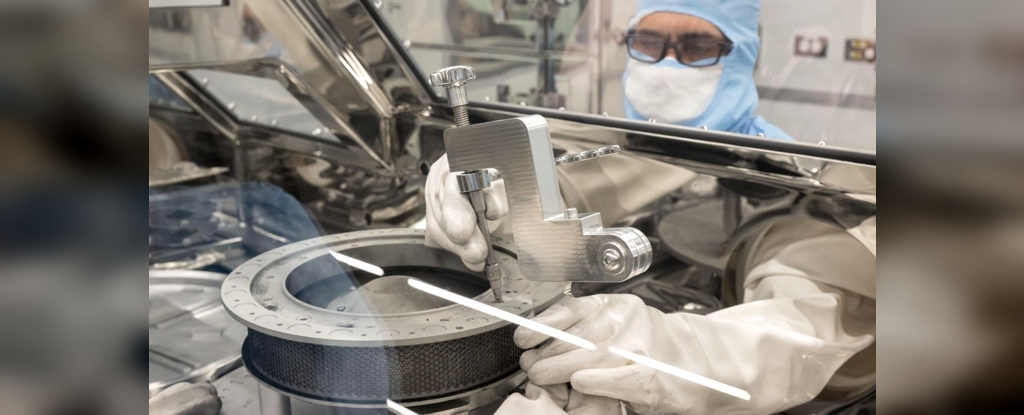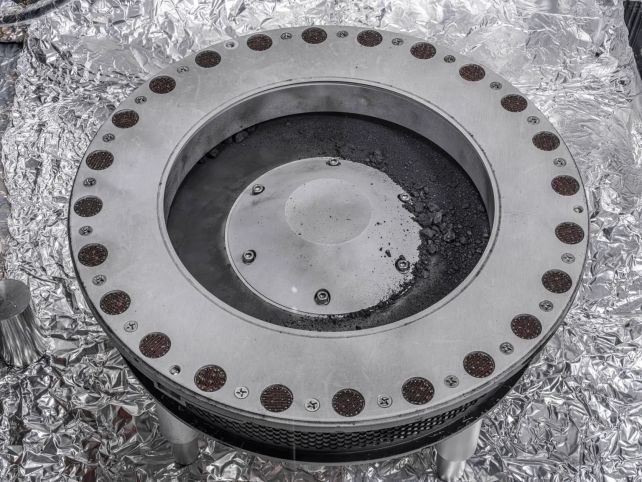
It's been more than 3.5 months since NASA's OSIRIS-REx spacecraft dropped its precious sample of asteroid dust, and scientists have finally been able to remove the lid from the sample container.
Now, the team can finally complete the steps necessary to dismantle the TAGSAM container and access rocks and dirt collected from asteroid Bennu. Once the sample is obtained, it can be divided and distributed to scientific teams around the world.
“Finally, unlocking the TAGSAM head and having full access to returned Bennu samples is a tremendous accomplishment that reflects the unwavering dedication and ingenuity of our team.” Astronomer Dante Lauretta says University of Arizona Lunar and Planetary Laboratory.
“This success reaffirms the importance of OSIRIS-REx and our commitment to advancing our understanding of the universe. We eagerly await the next chapter as we share these precious samples with the global scientific community and continue our journey of discovery.”
OSIRIS-REx flew around Earth on September 24, dropping TAGSAM after an epic mission lasting more than 7 years. The capsule parachuted into the Utah desert, where it was efficiently recovered and immediately transported to a clean facility, to be opened with as little ground contamination as possible.

Although the outer capsule opened very easily, giving scientists access to 70 grams of asteroid dust, the main TAGSAM head containing the majority of the sample remained tightly sealed against the team's best efforts. The container was closed with 35 clips, two of which remained highly resistant to instruments approved for use in the sterile glove box in which the opening would be made.
To solve this problem, the team had to develop new tools. They designed two new multi-part tools, which had to undergo rigorous testing and training before they could finally be used in the glove box on top of the actual TAGSAM.
There is still some disassembly to be completed before the full sample can be viewed, extracted and measured, but the big hurdle of at least these two stabilizers has been solved. The science can continue now.
“In addition to the design challenge of limiting processing-based materials to protect the scientific value of the asteroid sample, these new instruments also need to operate within the confined space of a glove box, which limits their height, weight and capabilities.” arc movement” says petroleum scientist Nicole Loeningcurator of OSIRIS-REx at NASA's Johnson Space Flight Center.
“The remediation team showed amazing flexibility and did a great job removing these stubborn fasteners from the TAGSAM head so we could continue dismantling. We are very pleased with this success.”
Now, finally, we may be able to glimpse the largest amount of asteroid clay ever successfully collected and delivered to Earth by a human mission.
OSIRIS-REx, now renamed OSIRIS-APEX, is currently on its way to another asteroid, the potentially dangerous object Apophis. This date is scheduled to take place in 2029.

“Web maven. Infuriatingly humble beer geek. Bacon fanatic. Typical creator. Music expert.”





More Stories
Scientists confirm that monkeys do not have time to write Shakespeare: ScienceAlert
SpaceX launches 23 Starlink satellites from Florida (video and photos)
A new 3D map reveals strange, glowing filaments surrounding the supernova